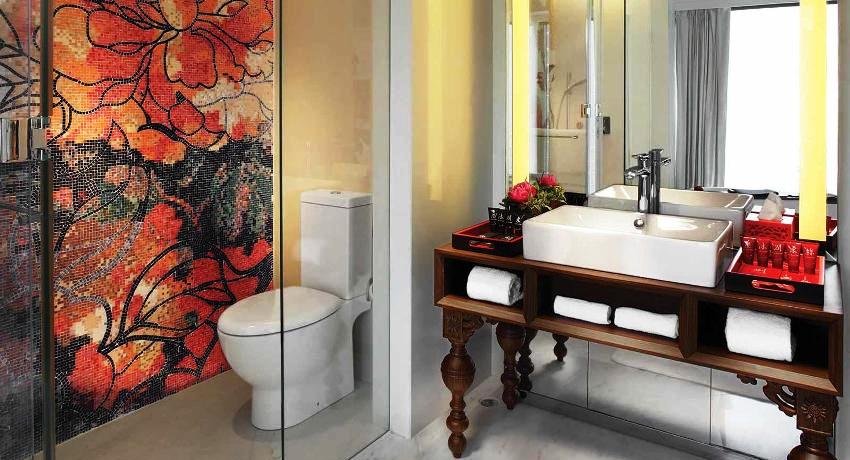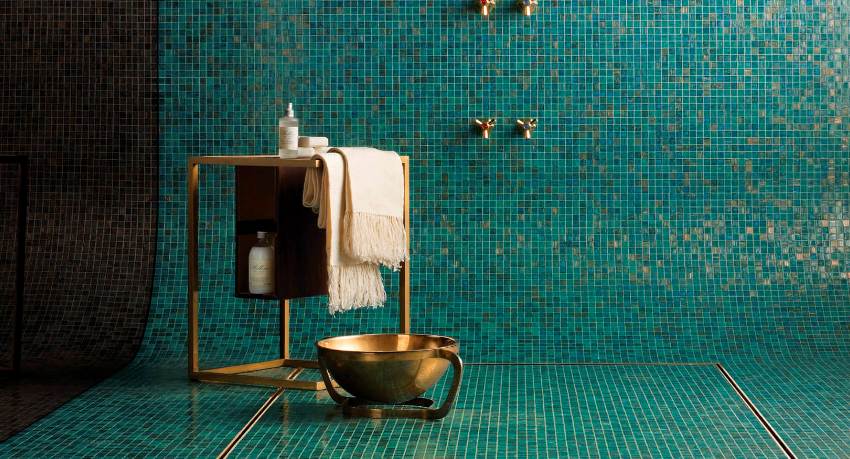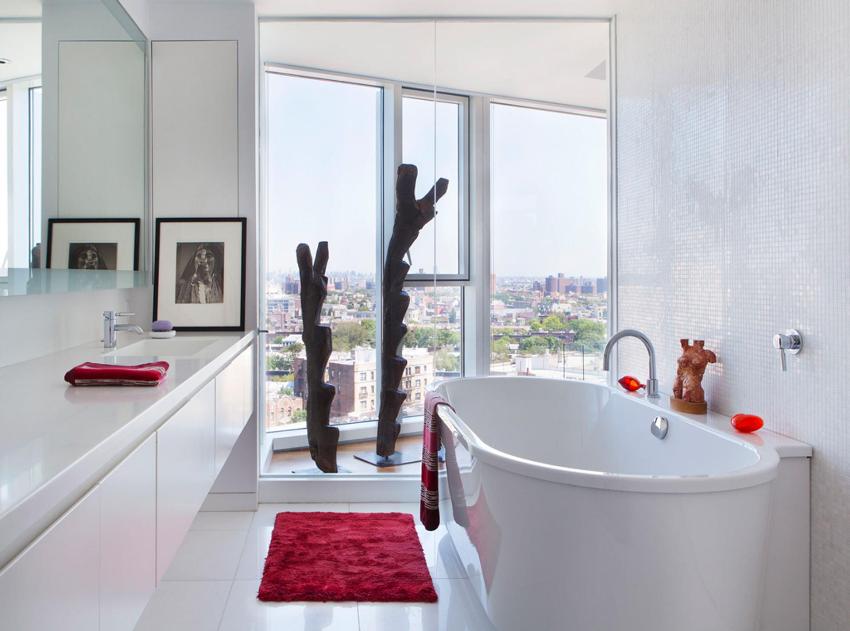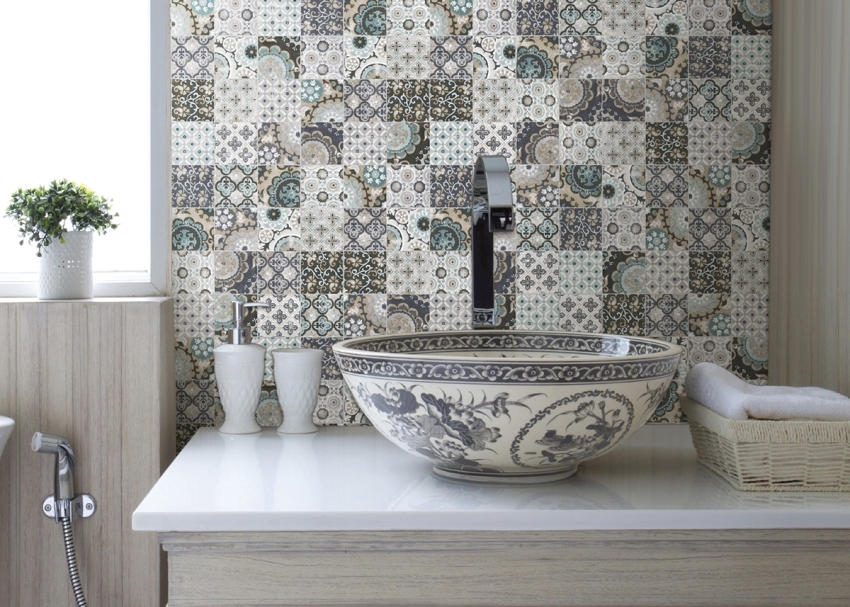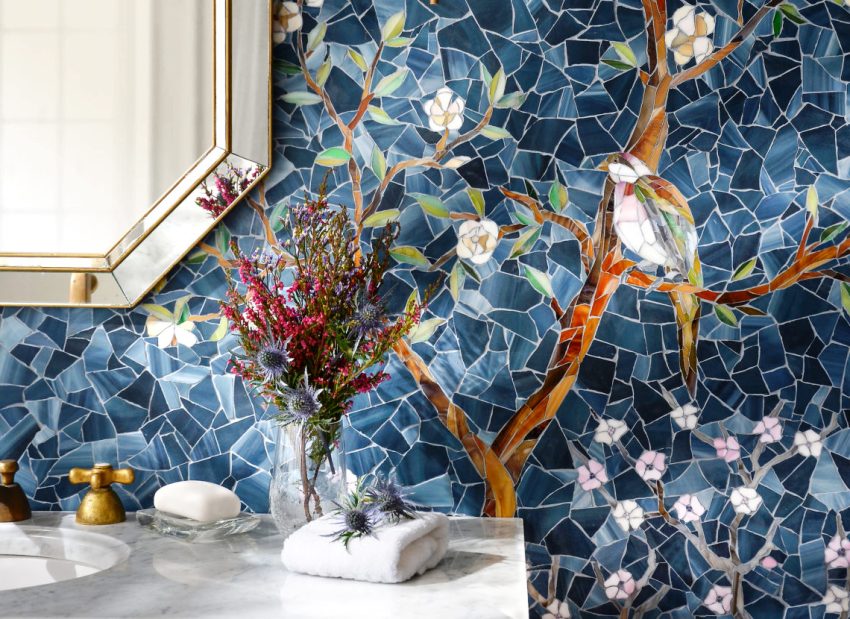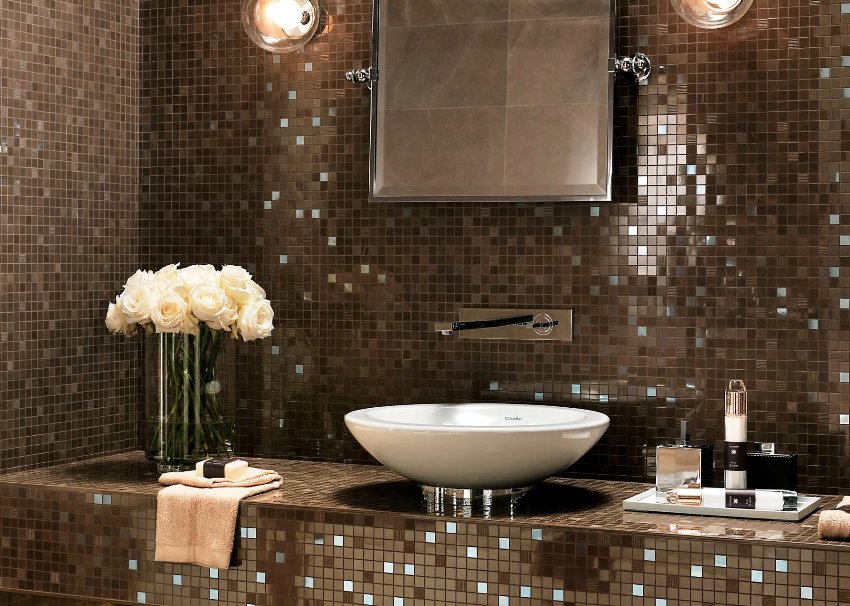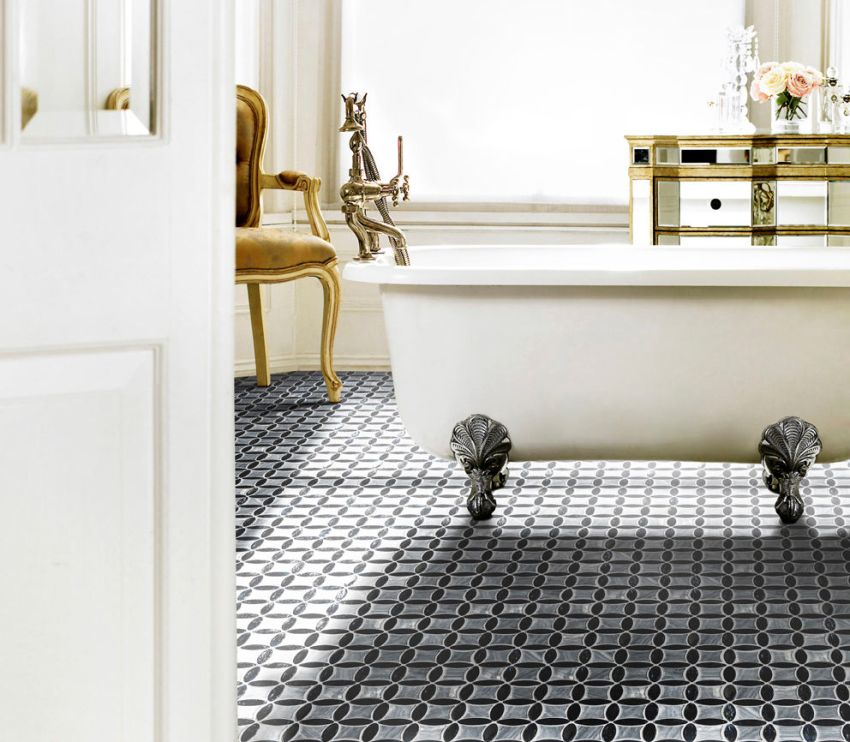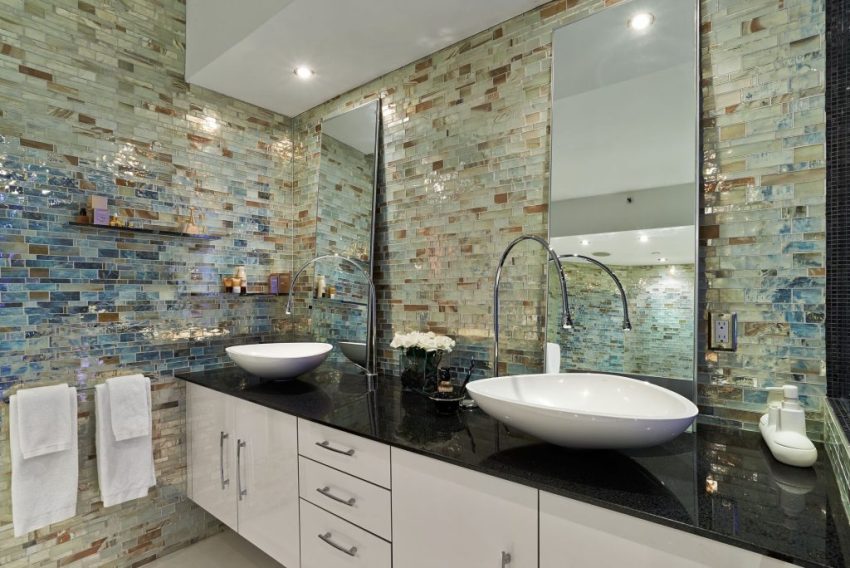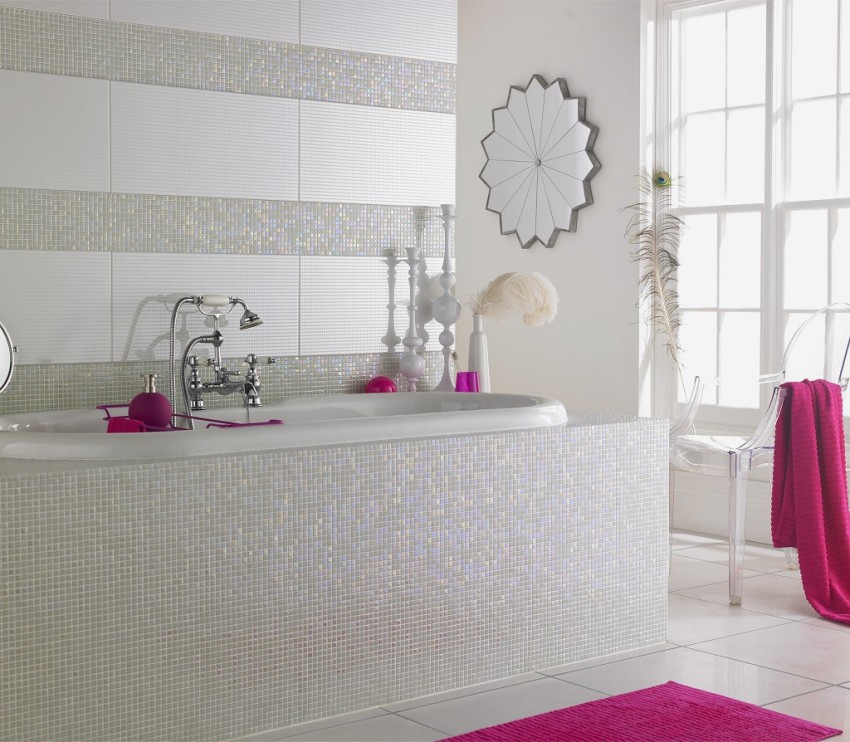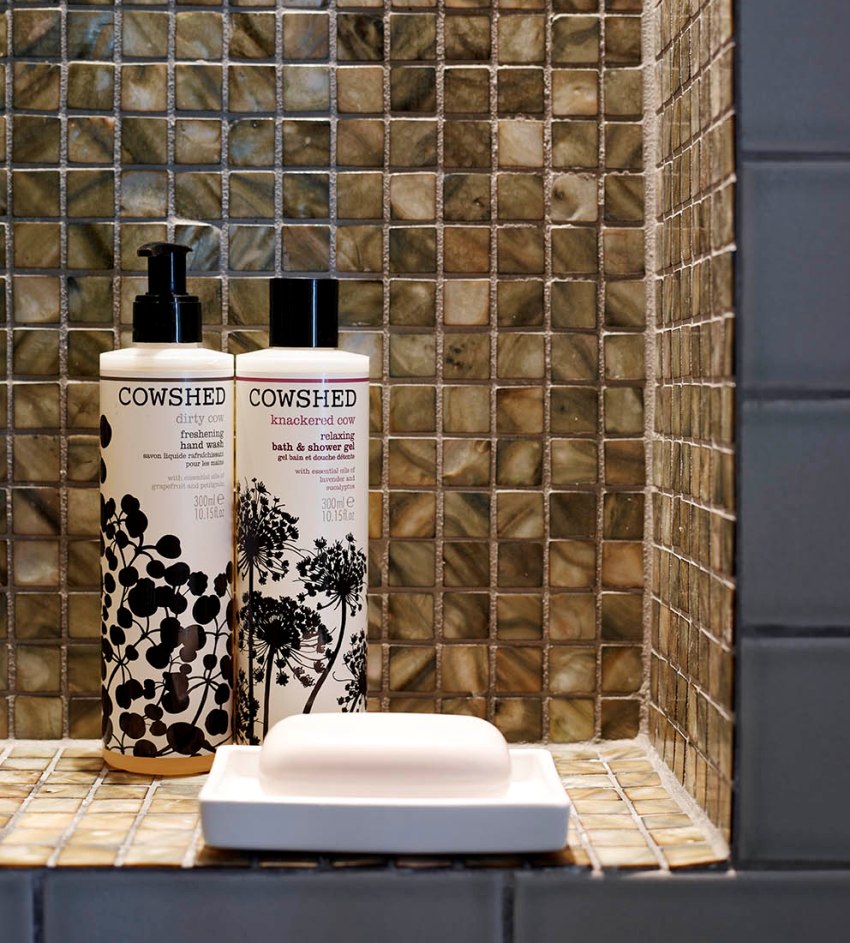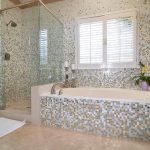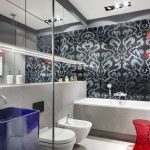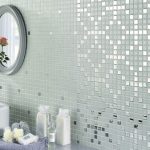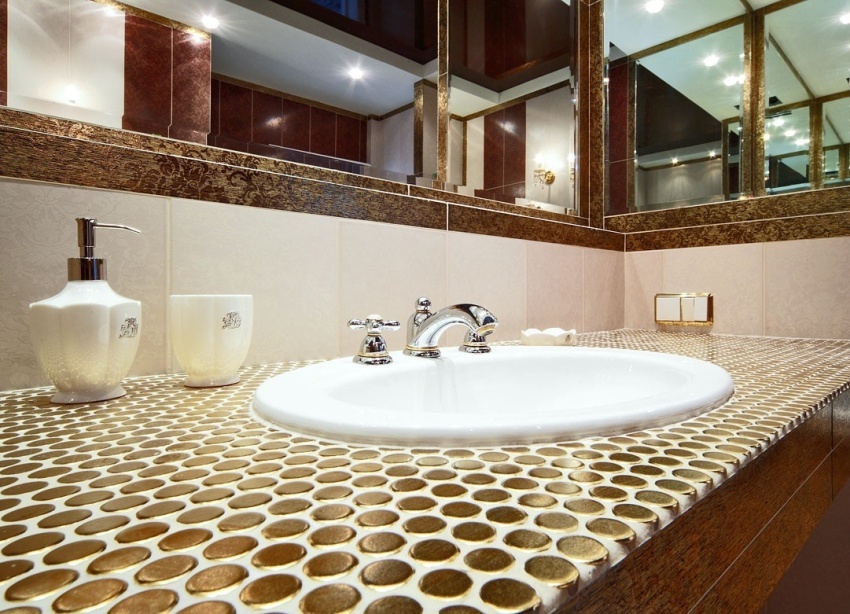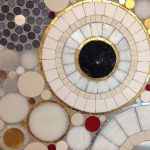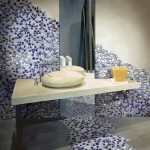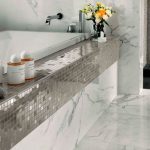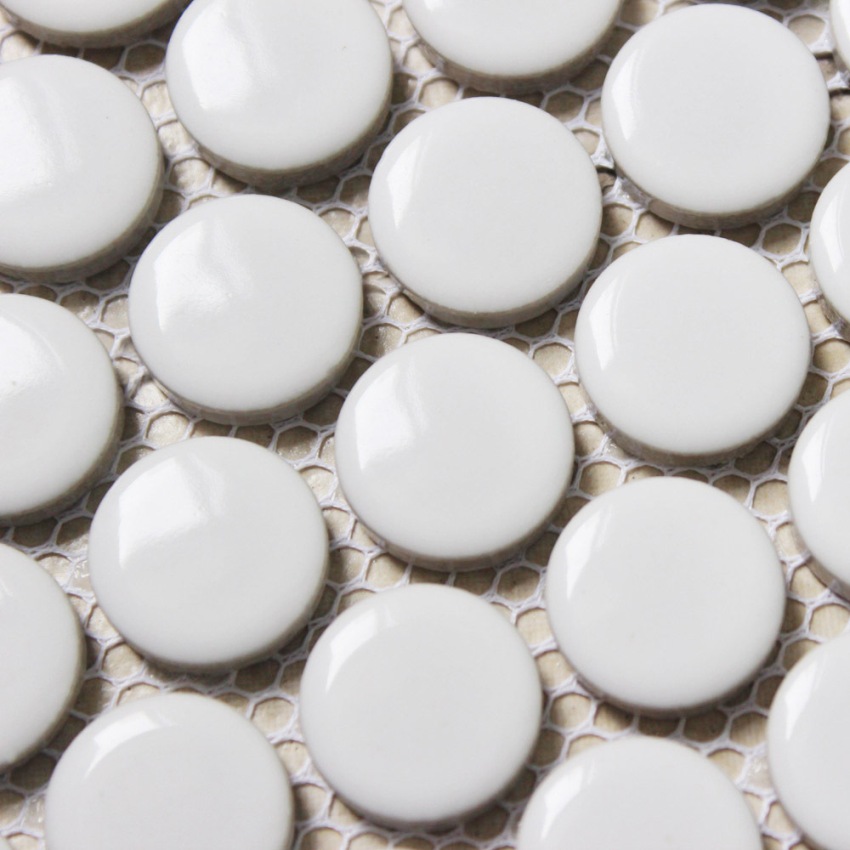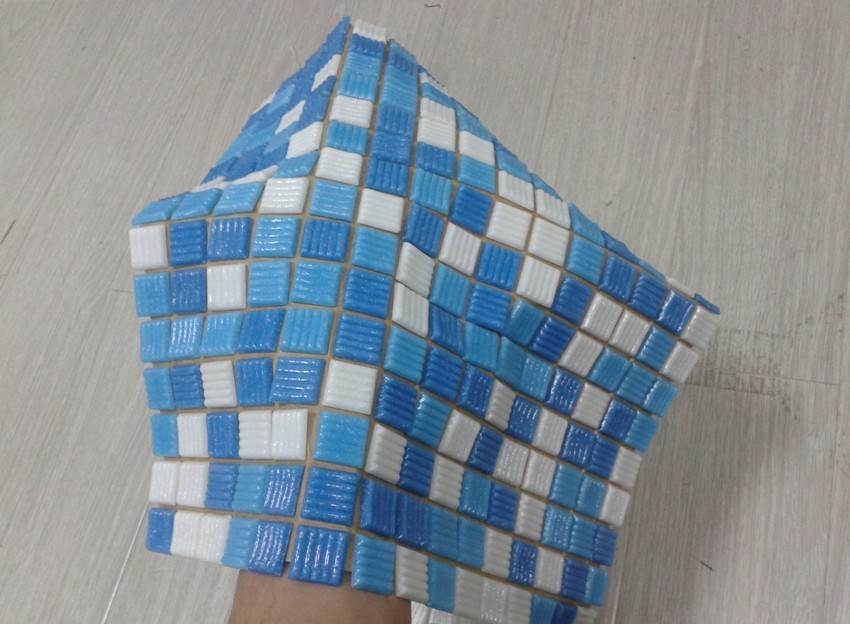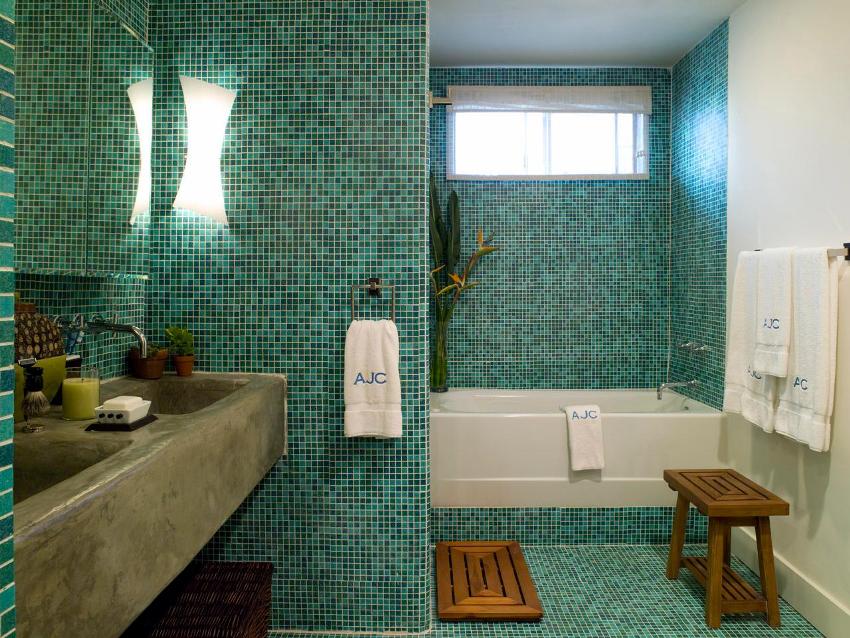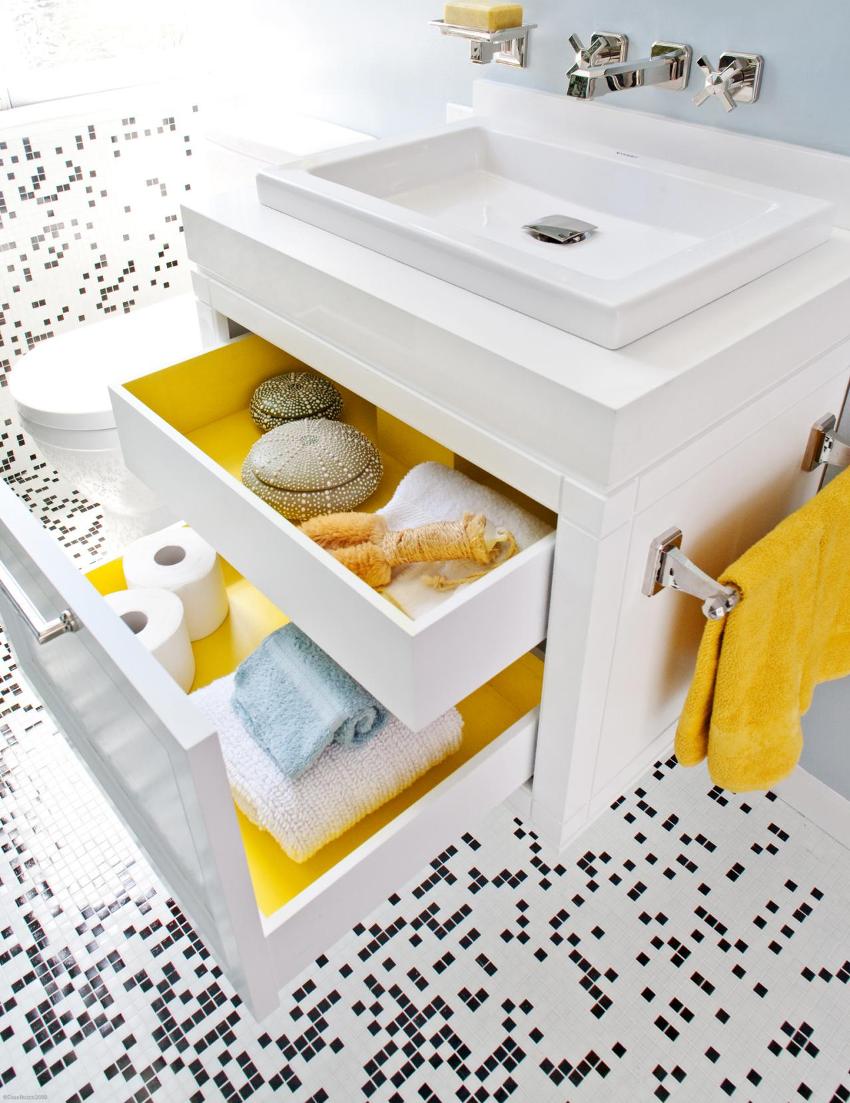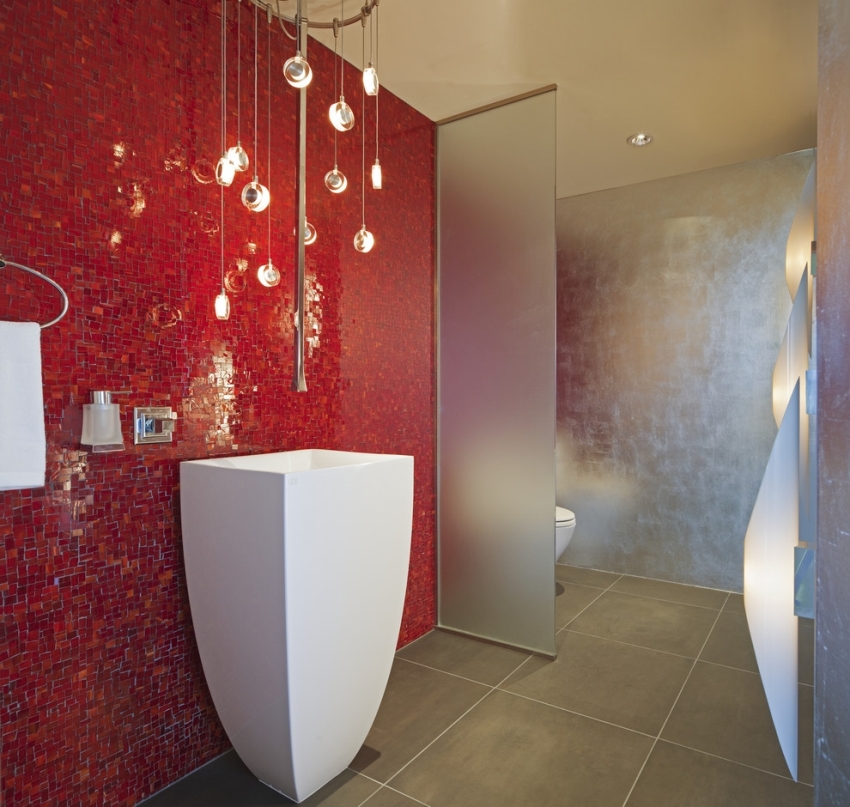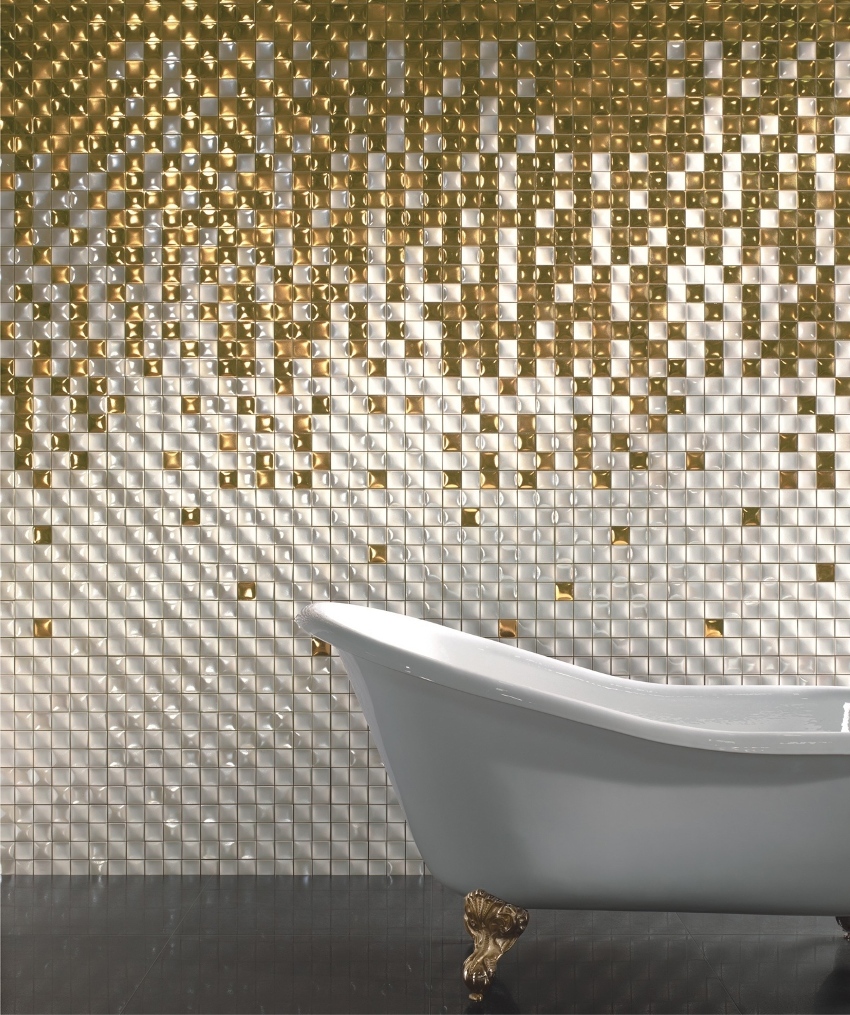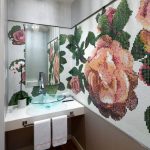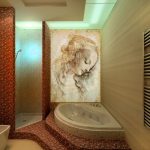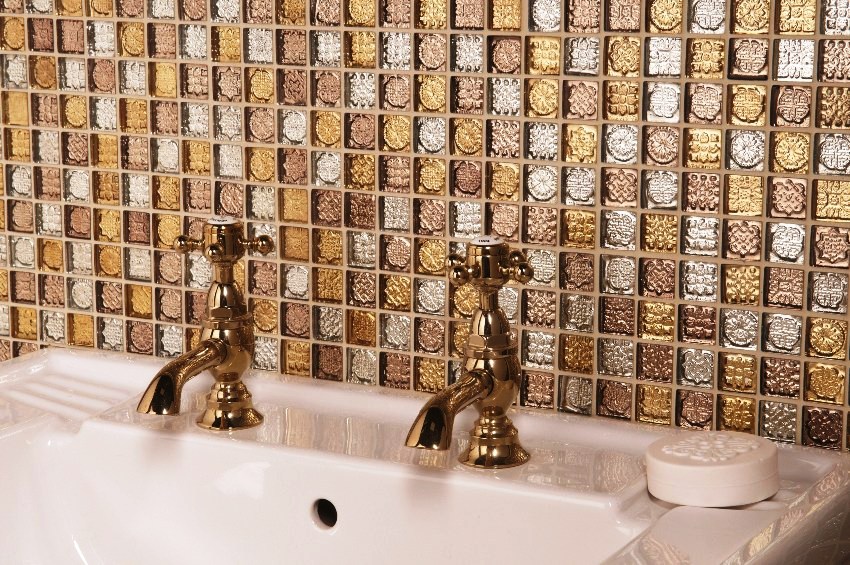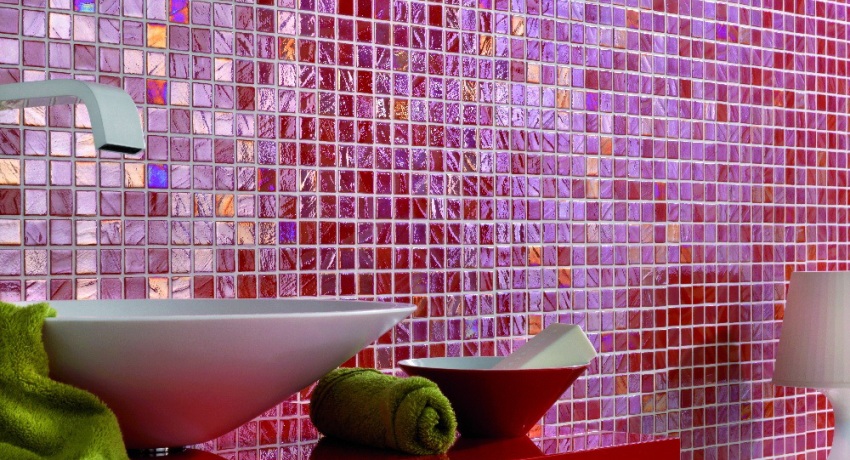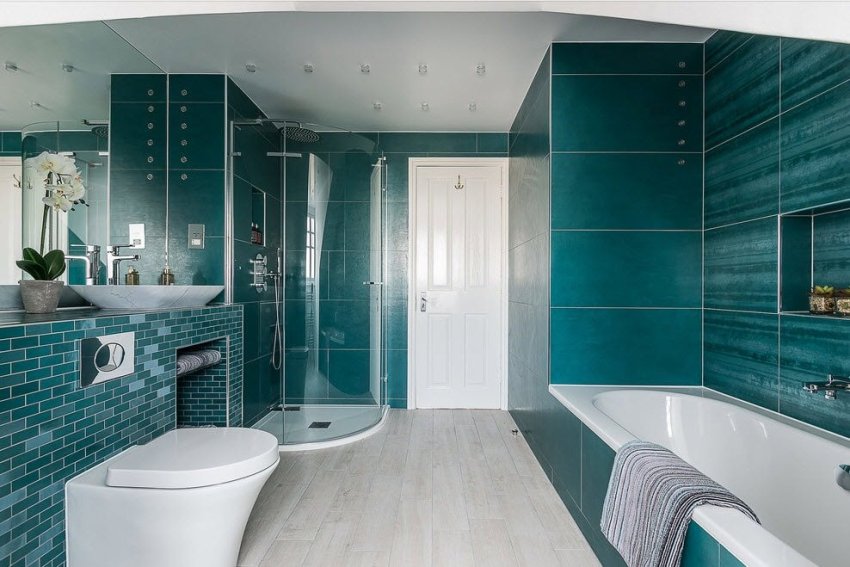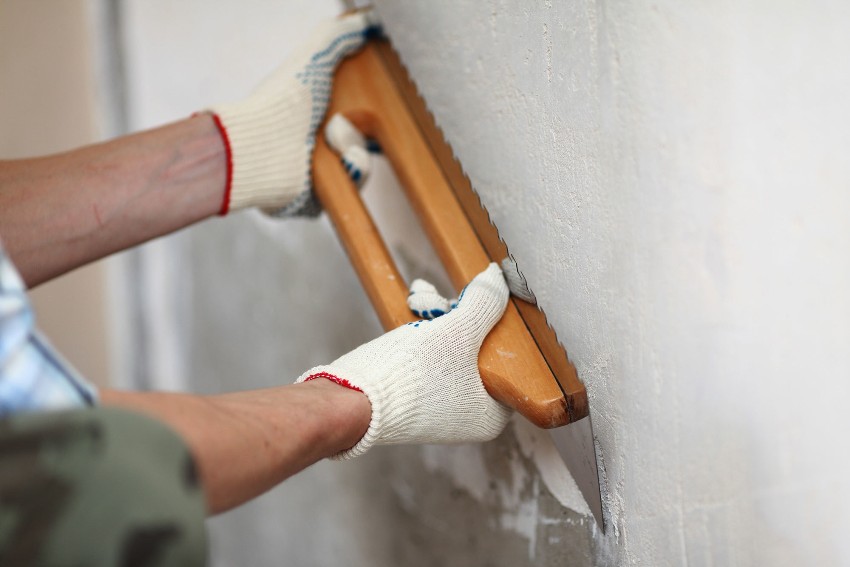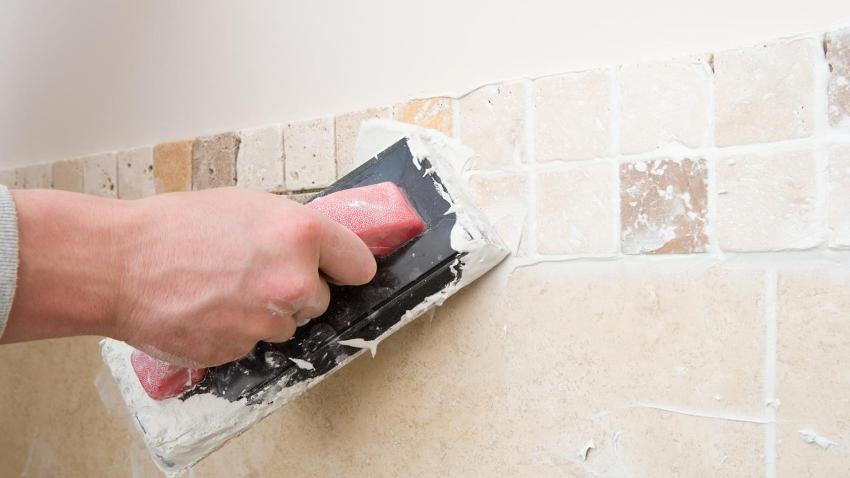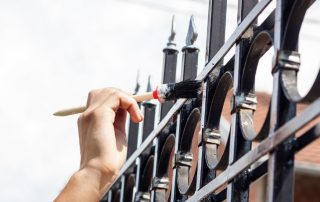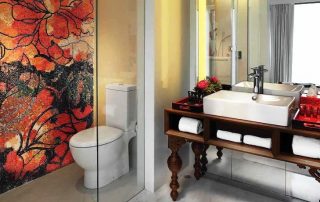Mosaic tile for bathroom is a finishing material that is a stylish and original solution that allows you to decorate rooms of different sizes. Long service life and presentable appearance determine its high popularity in the modern world. However, choosing and installing this material is not an easy task, since mosaic requires a special approach.
Content [Hide]
- 1 Advantages and Disadvantages of Mosaic Tiles
- 2 Bathroom mosaic: main types and characteristics
- 2.1 Features of ceramic mosaic: photos and characteristics
- 2.2 Glass mosaic tiles in the bathroom: photos and properties
- 2.3 Smalt mosaic tiles for the bathroom: photos and benefits
- 2.4 Stone mosaic tile for bathroom
- 2.5 Metal mosaic tile for bathroom
- 2.6 Bathroom mosaic tiles: non-standard solutions
- 3 Varieties of mosaics by type of base
- 4 Mosaic tiles in the bathroom: design, photo
- 5 Overview of popular mosaic laying options
- 6 How to glue mosaic tiles: laying algorithm
Advantages and Disadvantages of Mosaic Tiles
Like any other building material, mosaic has its own advantages and some disadvantages. It is highly durable and reliable. And also, which is very important, such tiles can be used in rooms with high humidity levels.
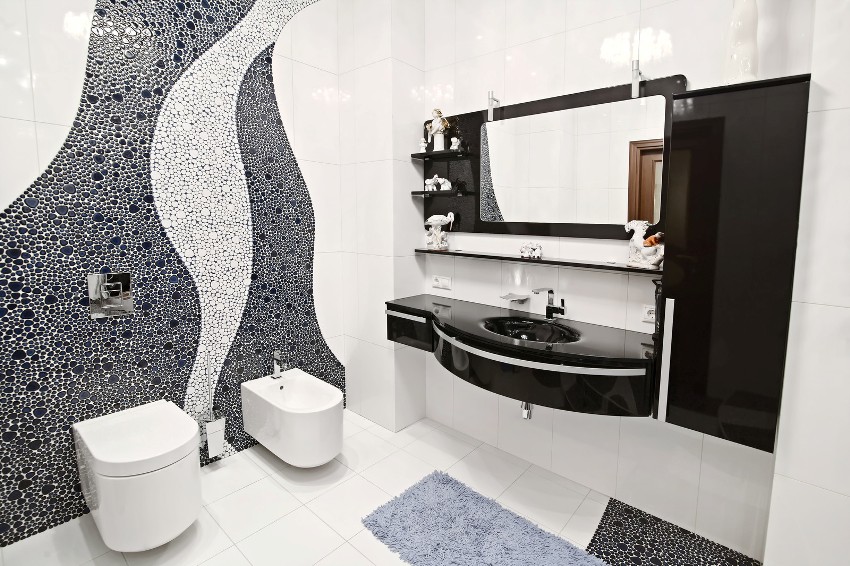
Most varieties of mosaic tiles have common advantageous characteristics: reliability, durability, moisture resistance
Another advantage of this cladding is its resistance to temperature fluctuations. In the modern construction market, you can choose mosaics of different sizes, shapes and colors. Thanks to this, each person is able to purchase exactly the material that suits the design of a particular bathroom.
When choosing a mosaic for a bathroom, it is also worth remembering that it is made from various materials. Each of them has its own characteristics. With the help of such cladding, you can decorate not only the vertical and horizontal surfaces of the room, but also individual elements of the interior.
Note! The small dimensions of the individual elements allow them to be laid on an uneven surface.
The color of the mosaic is durable and does not fade over time, which is also a big plus. From a design point of view, this cladding is one of the most interesting. If necessary, small tiles can be combined and made from them in various patterns and designs.
However, using mosaic tiles for the bathroom also has its drawbacks. The main one is the difficult installation.This minus is reflected in the cost of the work: laying such a cladding by a master will be quite expensive. The price of the material itself is also high.
Bathroom mosaic: main types and characteristics
It is customary to classify such a facing material into varieties according to several characteristics. The first is form. Consider what these products can be:
- square;
- rectangular;
- round;
- diamond-shaped;
- multifaceted.
Most often used are square and rectangular elements. This shape is the traditional solution for tiling surfaces in the bathroom. The original version is considered to be the use of elements that have an irregular shape.
Bathroom mosaics can be of various sizes (from 1x1 to 5x5 cm). The classic option is the use of 2x2 cm tiles. And, if necessary, you can purchase a mosaic assembled in blocks. It is a 30x30 cm tile, which consists of a base (paper, rubber, etc.) and individual elements glued to it. The price of self-adhesive bathroom mosaic tiles is lower than that of individual items.
An important criterion is the material from which the mosaic is made. In this case, there are several basic options. The most common is a mosaic made from ceramics. Glass elements are also popular, as well as smalt ones. To emphasize the originality of the interior, you can purchase this type of cladding made of non-standard material (for example, wood).
Features of ceramic mosaic: photos and characteristics
As mentioned above, such tiles are the most popular among buyers. It is distinguished by its versatility and reasonable cost. Elements made from this material have the same technical and physical characteristics as ordinary bathroom tiles. The main difference in this case is the size.
The surface of ceramic mosaic tiles can be different: glossy or matte. The first one is made using glazing technology and is easy to clean. Matte mosaic is more stylish, it is used for finishing mainly horizontal surfaces (floor), as it excludes slipping.
Helpful information! The surface texture of elements made of tiled material may also differ. On the market you can find products that imitate the surface of wood, stone, etc.
Ceramic cladding has many benefits. A large assortment of such products determines their wide operational scope. Using ceramics, you can translate almost any design idea into reality. It is resistant to temperature fluctuations, resistant to humidity and easy to clean. Mosaic tiles in the bathroom made of ceramic material are also fireproof.
This cladding looks good in combination with conventional tiles. Its point application is a common design move that allows you to focus on a specific area of the room. If necessary, you can make such a cladding yourself from old or broken tiles. From a self-made mosaic, you can also lay out a separate element, like a panel.
Glass mosaic tiles in the bathroom: photos and properties
The second most popular among buyers is glass mosaic tiles. Such cladding will cost less than ceramic. It has the same technical characteristics as regular glass. However, there is one difference - the high durability of the tiles. Glass mosaic production technology takes into account the use of several materials, including:
- quartz sand;
- feldspar;
- dye (metal oxide).
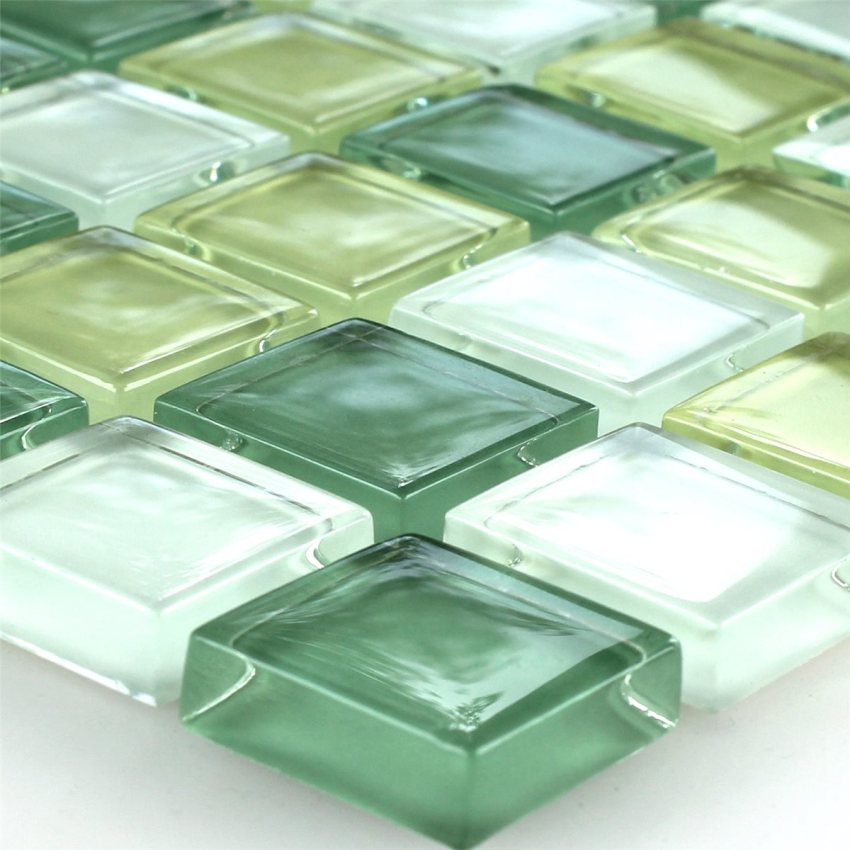
In the manufacturing process, glass tiles undergo heat treatment, as a result, the material is very durable
In order to obtain this type of veneer, melting technology is used. The next step is stamping. At the end of the process, the resulting elements are hardened by firing. Thus, the glass mosaic tile in the bathroom acquires high resistance to mechanical stress (shock).
Related article:
Ceramic tiles in the bathroom: design of modern finishes
Advantages and disadvantages of the material, design of products from catalogs and photos of finishing in the interior of the room, prices for products.
Glass elements are distinguished by their presentable appearance and are presented on the modern market in a variety of colors and textures. Products can be glossy or matte. Transparent glass mosaic is very popular.
Such a lining is resistant to bacteria, so the possibility of fungus on its surface is practically reduced to zero. It is characterized by heat and moisture resistance, and is also easy to clean. Separately, it should be said that glass mosaic can withstand not only high, but also low temperatures.
Tiles made from this material are most often used for wall cladding, but they can also be laid on the floor. Mosaic tiles for horizontal surfaces must have anti-slip properties.
Smalt mosaic tiles for the bathroom: photos and benefits
The facing material made from smalt has unique properties inherent only to it. The production technology of such a mosaic includes several stages. First, the material is compressed, after which the glass particles, colored with a dye, are fused into separate elements.
The smalt bathroom mosaic is used in rooms that are subject to increased stress. Thus, we can conclude that this material has a high strength factor. The advantages of such a cladding can also be attributed to resistance to low temperatures and active chemical compounds.
Note! Smalt products, like glass mosaic tiles, can be used to decorate swimming pools.
Smalt mosaic is opaque, but its peculiarity lies in the play of light. If you look at a single element of such a cladding, you will notice the effect of light emission from the inside.
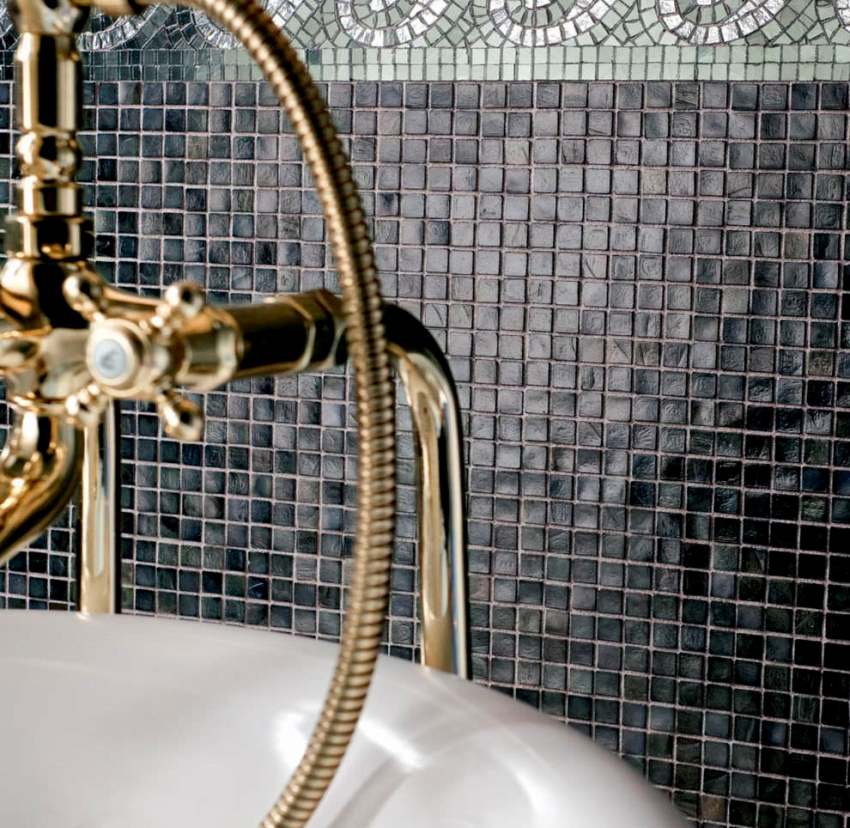
Smalt mosaic has a very smooth and pleasant to the touch surface, from which any dirt can be easily removed
Today the construction market offers a wide range of mosaics made of smalt. The shape and size of these items may vary. The main disadvantage of smalt cladding is its cost, which is higher than that of glass.
Stone mosaic tile for bathroom
Such cladding is made from different types of stone. It can be marble or granite. And also quite often on the market there are products made of jasper and slate. The stone mosaic is distinguished by its presentable appearance and can become a decoration of any bathroom interior.

Stone tiles are durable, resistant to various mechanical influences, so it can be used as a floor covering
To increase the aesthetic effect, finished stone elements are subjected to additional processing. Small elements are sanded, polished or artificially aged. This production technology contributes to the manufacture of unique cladding that looks great on walls and floors. For clarity, it is recommended to study the corresponding photos. Stone mosaic tiles are used not only for full cladding. With its help, you can highlight individual elements of the interior, place accents.
The technical characteristics of stone tiles are determined by their origin. It can be used in rooms with high humidity. It is not afraid of temperature fluctuations and is refractory. Such material is great for cladding surfaces both inside and outside the house.
The appearance and high technical characteristics affect the price of this type of mosaic tile. It is very expensive (especially marble). There are options when you can save a lot of money. For example, pebble elements have proven themselves well, and this material, if necessary, can be collected for free on the seashore.
Metal mosaic tile for bathroom
Such a mosaic appeared not so long ago, but has already found its buyer in the construction market. This type of cladding is made from a variety of metals, but steel is the most common. Brass mosaic tiles are no less popular.
Individual elements, which can have different sizes, are fixed on a special base. It is usually made of flexible materials (such as rubber). There are many varieties of metal bathroom cladding, which differ not only in size, but also in shape. In specialized stores, you can find elements in the form of triangles, hexagons, irregular geometric shapes, etc.
Helpful information! It is important to remember that such a cladding requires special care. It is strongly not recommended to wipe such tiles with chemical compounds that include abrasive particles.
The surface of the metal cladding is also classified into several types. It can be glossy or matte, and also have a specific texture. Photos of mosaics in a bathroom of this type will help you make the right choice, so it is recommended that you familiarize yourself with them.
Bathroom Mosaic Tile: non-standard solutions
Bathroom mosaic tiles can be made from other, less traditional materials. For example, if you want to save your finances, you can purchase plastic-based tiles. Polymer products are much cheaper, but they do not have such high technical properties. Such a mosaic does not look so impressive, but it is quite suitable for cladding horizontal and vertical surfaces in damp rooms.

The use of glass mosaic in the interior is now very important, such a finish can give the space an extraordinary and mysterious character
Of the advantages of polymer cladding, it can also be noted that it adheres very well to almost any surface. Besides, it can be used as a mosaic floor tile. The surface of the polymer mosaic is not as slippery as that of the tile cladding. A non-standard but effective solution is buying and styling mirror tiles... The technology of its production includes the processing of individual fragments of a mirror surface.It is most often used to highlight some element in the interior of the bathroom.
If necessary, you can purchase a mirror mosaic with a silver or gold plating. You can buy a mosaic for a bathroom of this type in a specialized store or place an order online. The cost of such material is quite high.
The least common is mosaic tiles made from wood. It appeared on the market quite recently. In its production, rare, expensive tree species are used. The use of such cladding allows you to clad the walls of the bathroom with small tiles of different shades. Of course, this solution is the most original.
Wooden mosaics require special care and are not fire resistant. And also it is not as resistant to moisture as other varieties of these products.
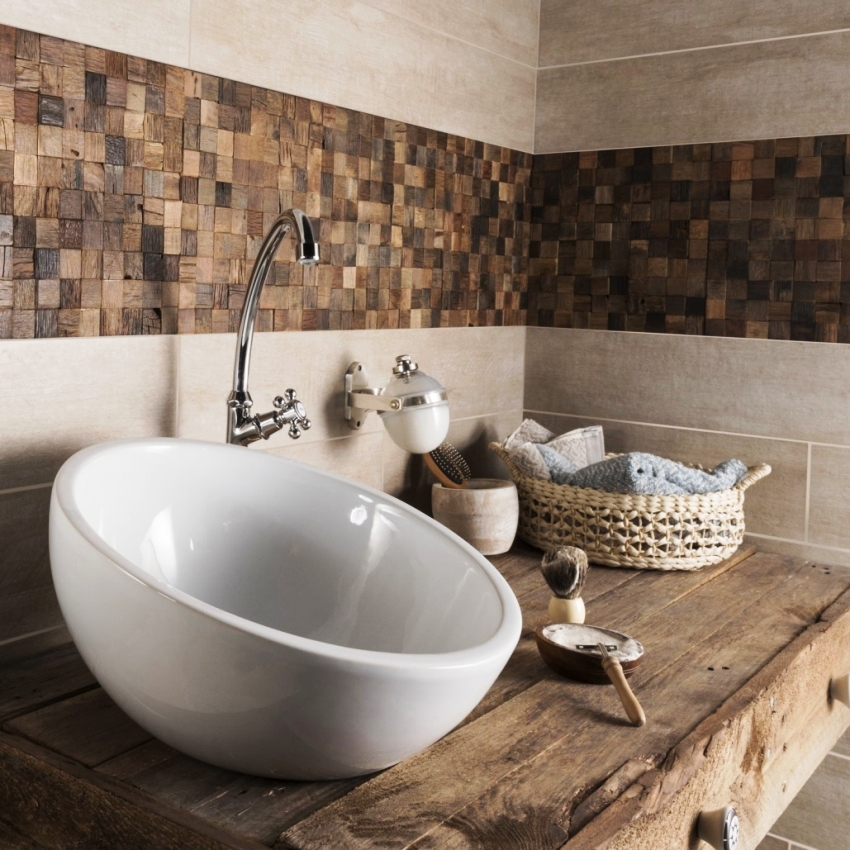
It is not recommended to use wooden tiles for finishing especially wet rooms, but it is possible to lay them as small decorative elements
Varieties of mosaics by type of base
Before buying, it is recommended to pay attention not only to the outer part, but also to the base of the mosaic. The bathroom is a room with high humidity, so the material for its cladding must be chosen with great care. Let's consider on what basis the mosaic tiles can be:
- mesh;
- paper;
- without a base.
Mosaic tiles on a grid. In this case, individual elements are fixed on a special grid. They are arranged in a certain order, forming the required pattern. Rectangular or square blocks made up of sequentially assembled individual tiles are great for mounting on any surface. They can be laid on uneven walls by adjusting the distance between the elements.
Mosaic tile on paper. The base of this material facilitates quick and accurate laying of the tile block. The paper is fixed to the front of the mosaic, which allows you to maintain the required arrangement of individual elements
Helpful information! After laying such a facing, it is necessary to remove the paper from its surface. For this, it is moistened with warm water.
Mosaic tile without base. It is rarely used for laying in bathrooms. Products without a base are usually used to organize beautiful panels. For such work, you must have certain qualifications. Therefore, for self-installation, it is better not to use a scattering of tiles. It should also be said that today you can buy ordinary tiles made to look like a mosaic. It looks presentable on the walls in the bathroom, and its installation is much easier. You can buy mosaic tiles in a specialized store or via the Internet.
Mosaic tiles in the bathroom: design, photo
Several main factors affect the appearance of such a cladding. These include: material of manufacture, processing option of the front side, size, shape and installation method. In order to carry out the original wall and floor cladding in the bathroom, all these criteria must be taken into account.
Mosaic tiles are in themselves a material that, after installation, looks presentable and stylish. The use of such cladding is more popular than the creation of a classic panel. This is due to the reasonable cost and relatively easy installation. Consider what options for mosaic design in the bathroom exist today:
- single color;
- background;
- gradient;
- mix;
- panel.
Monochrome.In this case, tiles of the same shade are laid on a vertical or horizontal surface. Most often it has the same size as well as shape. This design solution is suitable for creating a minimalist bathroom.
And also one-color mosaic is often used in order to organize a bright strip or geometric figure on the wall. Such a move in the interior affects the visual change in the proportions of the room, which is characteristic of the Art Nouveau style. Another option is the use of a cladding of a non-standard shape, but of the same color and size.
Background. This design option for the bathroom involves the use of tiles of the same or different sizes. Their combination should not form a distinct pattern. It should be noted that such a design solution can be either plain or colored, as well as with a pattern.
Gradient. An original and stylish design for a bathroom with mosaics. The peculiarity of this solution lies in the smooth transition of the shade from one edge of the wall to the other. This method of laying mosaics is used, as a rule, in cases where it is required to visually expand the space or increase the ceiling.
Mix. From the name it becomes clear that this design method takes into account the combination of different shades. The individual cladding elements in this case have the same shape and size. In the case of laying an overall mosaic (not less than 5x5 cm) using this method, it becomes possible to use elements with a pattern or imitation.
Such cladding is very popular in the construction market due to its favorable cost. If you are interested in the question of how to decorate a bathroom, then this option is one of the most suitable.
Panel. A spectacular design solution that requires professional skills. Mosaic tiles can be used to create real works of art that will last for many years. The shape of individual facing tiles in this case can be very different, as well as size, color.
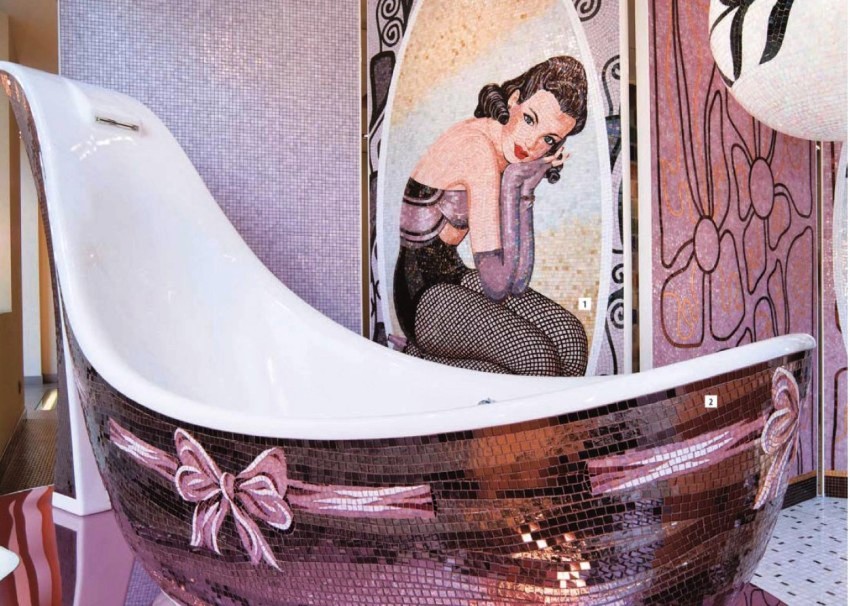
The panel, made on the basis of the matrix assembly technique, is an image that is assembled from a mosaic
Note! Individual tiles that are used to organize the panel are small in size. They are not assembled into blocks, so they can be laid on a curved surface.
There is an option that involves the use of block mosaic. It is more popular as it requires less installation skills and is cheaper. In turn, manual installation requires both professional training and high financial costs. However, a hand-assembled panel is the most effective interior solution that can be made. The panel is often used in combination with the background mosaic in the bathroom. Photos of designs of different types will allow you to visually appreciate the beauty of a particular styling method.
Bathroom tile design: color selection
Before you buy a mosaic tile, you need to decide on its color. Which shade to choose? Experts recommend paying attention to colors close to nature. They are most often focused on in the modern world. These can be brown, blue, beige and gray shades.
The wall, decorated with textured mosaic, which imitates stone or wood, looks original. The ideal solution for the bathroom is the installation of tiles made from natural stone. In case of a shortage of funds, you can also use a less expensive artificial stone.
The use of multi-colored mosaics is very popular. The bathroom, decorated in different shades, looks stylish and pleasing to the eye. However, it must be remembered that in this case it is strictly not recommended to combine more than three shades.
When choosing suitable tones, it is advisable to take into account the rules for their combination. For example, designers advise to mark one color as background. The other two will also serve a specific function. The second color will become additional, and the third will add the necessary accents in the room.
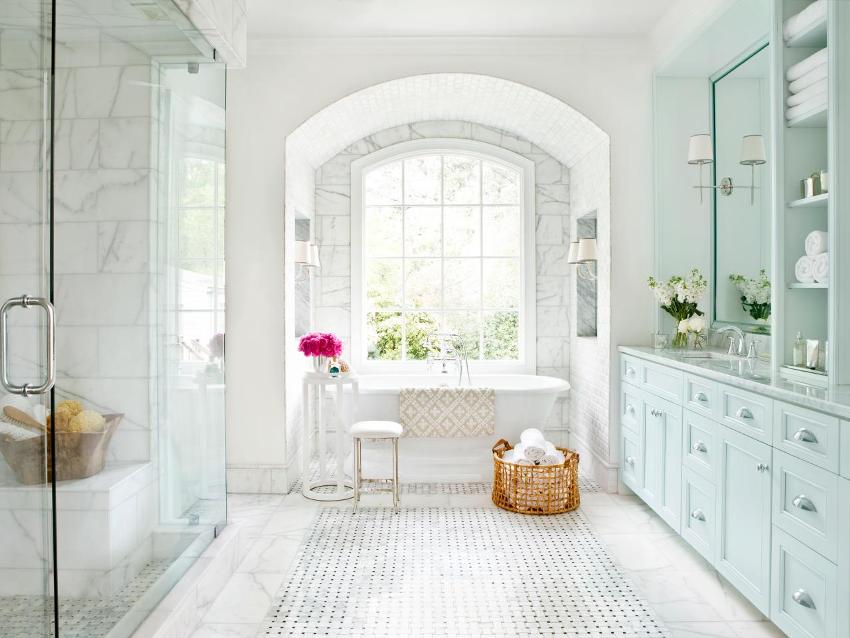
White tiles for the bathroom will always remain relevant, because this color has always been the basic and common design option for the room.
For the bathroom, it is advisable to choose a pastel shade as the background. The complementary color in this case should be brighter. Individual elements can be decorated with a more contrasting shade. In any case, before deciding on the design of the room, it is recommended to pay attention to the photo of the bathroom tiles. Mosaic can both decorate a room and "oversaturate" it.
A win-win solution is a white mosaic. Such a room will always look stylish. Therefore, if you cannot decide on the variety of colors, then opt for white tiles. It has another significant advantage: water streaks are not so visible on it.
Overview of popular mosaic laying options
There are several ways to install mosaic tiles. Some are more traditional, while others are rarely used. Consider the installation options for this facing material in more detail.
Basic (grid). This method is popular because it is the simplest. In this case, the mosaic wall tiles are laid parallel to the plane of the wall itself. It is also worth noting that the seams between the individual elements during this installation take the form of a mesh. This method of laying allows you to use not only classic-shaped tiles.
Helpful information! For mesh installation, it is best to choose one shade of cladding. The use of multicolored elements is not recommended as they distract attention from the seams.
Basic (angular). This method is also common and involves laying individual mosaic elements with a diamond. They are glued to the wall at a certain angle of 45 °. Such a mosaic arrangement allows you to visually align the walls if they are curved.
It is also worth noting that the corner installation contributes to the visual expansion of the room. However, with this installation, there are some disadvantages. The main one is the need to cut the material to fit it. Designers recommend using one or two shades for wall cladding in this way. There are other bathroom renovation ideas, but in any case, you cannot combine more than three colors.
Chess. Laying the mosaic in this way is similar to the first option (basic). The difference in this case lies in the location of the seams and the colors of the individual facing elements. With this installation, two mosaic colors are used, which must necessarily be contrasting with respect to each other. And the seams are located sequentially, without displacement. The checkerboard version is often used for laying embossed tiles that have notches. The alternation of horizontal and vertical stripes creates a stylish and interesting cladding.
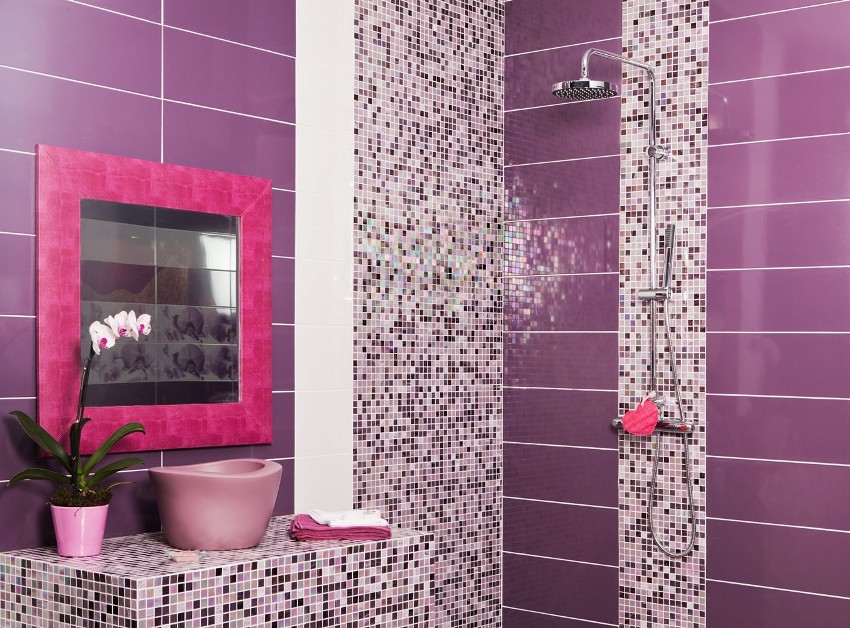
The linear method of laying tiles involves installation in rows that differ in texture and shade from the main background
Linear.The technology of such a laying is done in the same way as in the first case. It differs from the basic method only in that it involves the installation of rows that differ in texture and shade from the main background. Such styling is most often used to decorate bathrooms in a modern style (for example, high-tech).
Take a break. It is used when laying mosaic tiles on the floor or wall. It is another variation of the traditional basic style. In this case, the mosaic is laid with mixing exactly half of one facing element. The effect, which is achieved with a staggered installation, gives the cladding the appearance of a brick wall.
In some cases, other technologies are used for laying mosaics: modular, parquet, embossed, etc. However, the above are the most common options for laying such tiles today. You can buy a mosaic for a bathroom in a specialized store, a construction hypermarket, or order online.
How to glue mosaic tiles: stacking algorithm
Laying mosaics is more complex than tiling surfaces with conventional tiles. Mosaic tiles require a special approach, certain skills and knowledge. In the case of self-installation, experts advise paying attention to wall or floor mosaic tiles. Such material will simplify installation. The front side of such products imitates a mosaic, but the back surface is made in the same way as for ordinary tiles.
In turn, the algorithm for laying mosaic cladding is more complicated than in the case of a mosaic bath tile. Therefore, it is recommended to study it carefully. First of all, it is necessary to prepare the surface on which the mosaic tiles will be glued. It is advisable to level the walls and floor. Next, you need to prime the surface. This will enhance the adhesion of the tiles.
The next step is the preparation of the appropriate tools and materials. Particular attention must be paid to the choice of adhesive. For most varieties of such cladding, a gray compound is used. In turn, white glue is used when installing glass mosaics.
Helpful information! Be sure to take into account the individual characteristics of the room. Mosaic tile adhesive can be moisture resistant (recommended), frost resistant, and fungicidal. The latter is resistant to fungi and mold.
From the tools you will need to purchase a special notched trowel (3x3 mm), tape measure, building level. And also you need to prepare a marker for marking and a rag, which will be required when grouting.
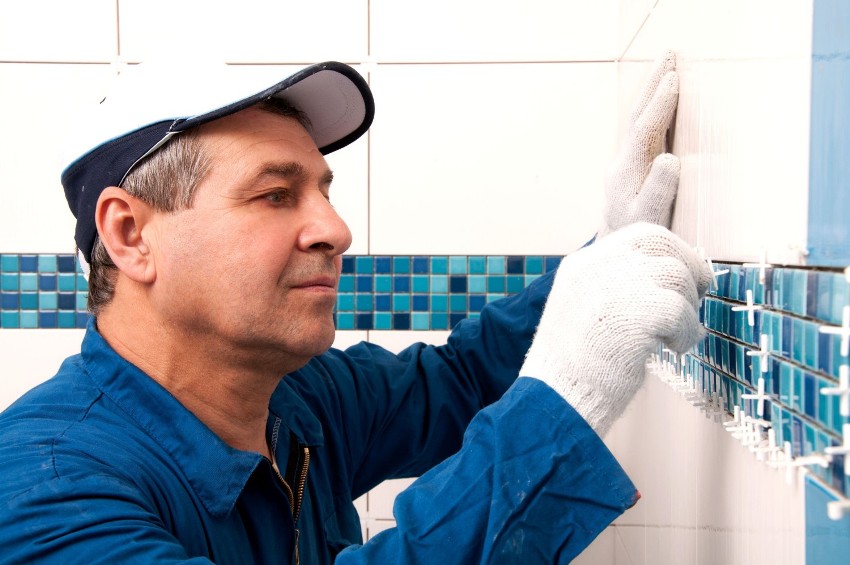
Having studied the main stages of the mosaic laying technology, if you have the necessary tools, you can do it yourself
Applying the necessary drawing to the wall or floor will avoid mistakes when laying such a cladding. Experts especially advise using such a trick in cases where a complex version of mosaic installation in the bathroom is chosen. Photos of the various stages of this process can also help with self-styling. Therefore, it is recommended to study them.
Then the mosaic tiles are installed directly. First, you need to apply glue to a small area of the wall or floor. At the next stage, the individual elements are laid. Each tile must be pressed into the glue and controlled so that it does not fall on the front surface. It is important to remember that during installation you need to monitor the evenness of the row. This requires a building level.
After installing the mosaic, you need to wait about two days. During this time, the glue will have time to dry. Then it remains only to remove the base (paper) from the front surface and grout the joints.
Mosaic tiles are a stylish and modern cladding option. The construction market offers many varieties of such material, each of which has its own characteristics. Mosaic laying can be done independently, but it is advisable to use the services of a specialist. This will avoid mistakes that lead to material damage.
